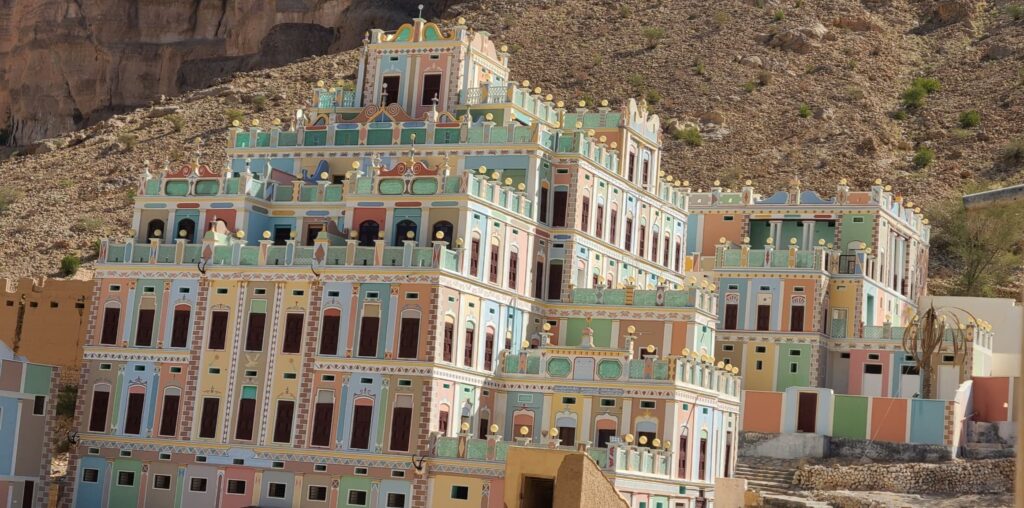Baqshan Palace in Hadramout’s Wadi Doan – An Icon of Yemeni Mud Architecture andCultural Heritage

Baqshan Palace is one of the most prominent historical landmarks in Hadramout Governorate, located in the famous Wadi Doan, which is home to many villages with unique architectural styles. This palace stands as a symbol of the mudbrick architecture for which Hadramout is renowned and is a living witness to a rich era of history, tradition, and architectural elegance.
Location and Accessibility
The Baqshan Palace is situated in the village of “Al-Quwairah” in Wadi Doan – one of southern Hadramout’s valleys. It is easily accessible via the main road from either Mukalla or Seiyun. The palace is surrounded by breathtaking natural landscapes of mountains and valleys, making it a perfect destination for lovers of nature and history alike.
Historical Background
The Baqshan Palace was built in the early 20th century by members of the prominent Baqshan family, known for their influence in trade and philanthropy. The palace was constructed in the traditional Hadrami style using mud and gypsum as primary materials, with architectural details that reflect the refined tastes and affluence of that historical period.
Architecture and Design
The palace consists of multiple floors, adorned with beautiful decorative engravings. It includes several rooms and halls once used for residence and hosting guests. Its wooden windows are painted in vibrant colors and feature stained glass, while its large entrances exhibit a grand style typical of Hadramout’s mudbrick palaces.
The Palace as a Tourist Landmark
Today, Baqshan Palace attracts both local and foreign visitors interested in exploring the rich Hadrami heritage. It is also used for cultural and social events and is preserved by local residents as a significant part of the region’s historical identity.
The Palace’s Role in Yemeni Heritage
The palace is a unique example of sustainable environmental architecture, built with local materials suitable for Wadi Doan’s climate, making it comfortable year-round. It also embodies the cultural and social values of Hadrami society and stands as a symbol of authenticity and historical identity in southern Yemen.